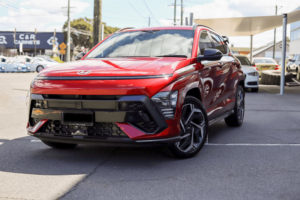Car window tinting technology has advanced significantly, offering car owners a range of options to enhance comfort, privacy, and protection. Among these options, ceramic window tints have gained popularity for their superior performance and durability compared to regular tint films. In this comprehensive guide from Solar Style, we delve into the differences between ceramic and regular window tints to help you make an informed decision for your vehicle.
Understanding Regular Window Tints
Regular window tints are typically composed of dyed films made from a thin laminate polyester sheet. These films are available in various shades of grey or brown and work by absorbing sunlight, similar to how sunglasses block light. The benefits of regular window tints include:
- Affordability: Regular tint films are generally more budget-friendly compared to ceramic tints, making them accessible for car owners looking to tint their windows without significant upfront costs.
- Privacy and Glare Reduction: They effectively reduce glare and improve privacy by limiting visibility into the vehicle’s interior, enhancing comfort during driving.
However, regular tint films have some drawbacks:
- Susceptibility to Damage: The thin laminate material is prone to scratches, which can detract from the film’s appearance and reduce its effectiveness over time.
- Heat Absorption: Unlike ceramic tints, which reflect heat, regular tint films absorb heat, potentially leading to increased thermal stress on the vehicle’s windows.
Advantages of Ceramic Window Tints
Ceramic window tints represent a technological advancement in tinting materials. These tints incorporate nano-ceramic particles into the film, offering several significant advantages over regular tint films:
Superior Heat Rejection
Ceramic tints reflect a larger portion of sunlight away from the vehicle, reducing interior heat buildup and creating a cooler, more comfortable environment for passengers.
Glare Reduction
By minimising glare, ceramic tints improve visibility and reduce eye strain, enhancing safety during daytime and nighttime driving conditions.
UV Protection
Ceramic tints provide excellent UV protection by blocking up to 99% of harmful UV rays. This helps protect vehicle occupants from sunburn and reduces the risk of interior upholstery and dashboard fading.
Durability
Compared to regular dyed films, ceramic tints are more durable and resistant to scratching and fading. They maintain their performance and appearance for a longer period, reducing the need for frequent replacements.
Cost Considerations
One of the primary considerations for car owners is the cost difference between ceramic and regular window tints:
- Initial Cost: Ceramic window tints are generally more expensive upfront compared to regular tint films due to their advanced technology and superior performance characteristics.
- Long-Term Savings: Despite the higher initial investment, ceramic tints offer long-term savings through improved energy efficiency (reduced need for air conditioning) and reduced maintenance costs (less frequent replacement).
- Value Proposition: Many car owners find that the benefits of enhanced comfort, UV protection, and durability justify the additional cost of ceramic window tints over the lifespan of their vehicle.
Choosing the Right Tint for Your Car
When deciding between ceramic and regular window tints, consider the following factors:
- Climate and Driving Conditions: If you live in a hot climate or frequently experience intense sunlight, ceramic tints may offer better heat rejection and UV protection, enhancing overall comfort.
- Budget and Preferences: Evaluate your budget and preferences regarding initial investment versus long-term benefits. Regular tint films provide a cost-effective solution for basic tinting needs, while ceramic tints cater to those seeking premium performance and durability.
- Personalisation: Both types of tints offer customisation options in terms of shading and appearance. Discuss your preferences with a professional installer to find the tint that best suits your aesthetic and functional requirements.
The choice between ceramic and regular window tints depends on your priorities for comfort, protection, and budget. Ceramic window tints excel in performance metrics such as heat rejection, UV protection, and durability, making them ideal for car owners looking to invest in long-term benefits. Regular tint films, while more affordable, may require more frequent replacement and offer fewer advanced features.
For expert guidance on selecting and installing the right window tint for your vehicle, contact Solar Style today. Our team of professionals specialises in high-quality tinting solutions and can help you explore options tailored to your needs. Enhance your driving experience with the optimal window tinting choice from Solar Style, ensuring comfort, protection, and style for your car.

